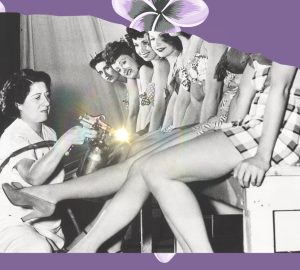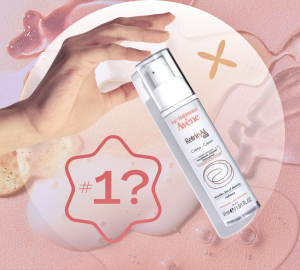Should we stop blaming the media, Part I: A historical confrontation of modern body image issues

Part One of a Three-Part Series.
Written by Allison Bolt.
The ideal female form has been portrayed throughout history. In art history class, we are overwhelmed with female nudes and their different symbolisms. Women seem to have always been on display, their bodies always under a microscope.
Contrary to popular thought, this wasn’t necessarily a bad thing, historically speaking. Art history shows us that women’s bodies were portrayed for their beauty, fertility and prosperity. Today, society is consumed with dieting, working out, losing weight and fitting the current definition of the ideal body type. Far too often, this obsession surpasses the healthy. When exactly did portraying the female body begin to have adverse effects on society, such as the ones we see today?
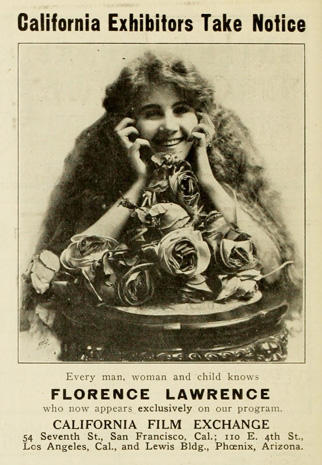
We could possibly trace the creation of an “ideal body type” to the first time society gained a celebrity, someone that seemed larger than life and the perfect woman. Florence Lawrence was the first female to be considered a “movie star.” Her career peaked in the early 1900s when suddenly all eyes were on her. With the emergence of the entertainment industry, it wasn’t long until the glamor of Hollywood consumed the middle to late 1900s. The glamorous movie stars of Hollywood seemed larger than life, and society was greatly influenced. What woman wouldn’t want to look just like Marilyn Monroe?
At the same time, maybe the real problem began when photos and images of the larger-than-life celebrities began being edited. Their bodies being shaped up a little here, and smoothed out a touch there. Soon, wanting to look like a star became physically impossible without Photoshop.
The media’s effect on body image in our society is undeniable. However, maybe the blame for recent unhealthy practices has been misplaced. We often blame the media for creating these negative body image effects by how it alters women’s bodies with photoshop, but if we take just a few steps back, before Florence Lawrence’s premier on the big screen, we find a similar negative body image climate. In fact, we find extremely unhealthy weight loss and body modification techniques. The difference is these women weren’t comparing themselves to supermodels in fashion magazines, or skinny movie stars whose bikini photos are plastered across tabloids.
A lack of hard evidence to prove that women were working toward one ideal body type, as well as a lack of photoshopped media influence, brings up a new question. Is the recent body image struggle directly related to media influence, or is it a natural part of the human condition and always will be?
Today, we are appalled by the increase in diseases such as anorexia and bulimia, the use of waist trainers resembling corsets and obsessive workout practices. A quick examination of history can reveal that we are not the only society to use unhealthy practices to obtain a perfect body. Historically speaking, our practices are far less horrifying. In this series, we will discuss body modifications that took place throughout history, compare them to our own and then decide whether or not body image issues are truly a primal part of humanity.
Let’s begin with Chinese foot binding, which began in the 12th century. Foot binding lasted for 10 centuries and was seen as a visual representation of social status. The prime age for binding a young girl’s feet was between the ages of four and six while the bones were still soft enough. While the process lasted only two to three years, the effects were lifelong. The process involved binding the toes under the sole with tight ribbons, as well as binding anywhere that grew too large. Bound feet held a promise of marriage to a wealthy man. This process of foot binding involved crushing the foot, extreme pain, a more difficult way of walking and even infections. All of these terrifying effects of foot binding were all based upon social status. A mother bound her daughter’s feet to ensure her future and wealth.
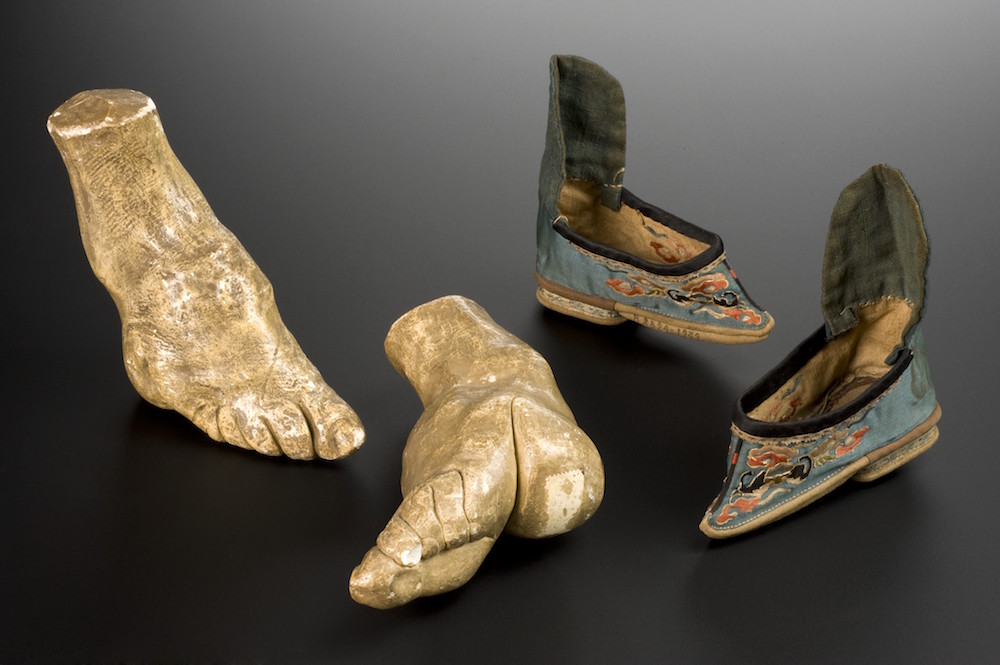
Credit: Science Museum, London. Wellcome Images.
Corsets are a more relatable body modification treatment in our society. We can relate them directly to the popular “waist trainers” that we see celebrities, such as Kim Kardashian, promoting. The origin of corsets can be traced back to the beginning of the 16th century. The waist reducing corset continued through the late Victorian era, although it could be argued that it still hasn’t ended completely.
Corsets were traditionally made with a lace-up back and boning constructed from whalebone, steel, or wood. These materials created the perfect hourglass figure for the woman’s gown. Corsets were also extremely damaging to the female form, so much so that organs shifted in the body with enough wear. However, this was commonly endured to attain the ideal female figure. Although the waistline height on a woman’s torso changed multiple times over the centuries, the corset remained practically unchanged throughout the years.
Switching over to a more stomach churning method of gaining the ideal female body, the early 1900s brought the “tapeworm diet.” The tapeworm diet was advertised as a “nutrient absorption” product and promised weight loss with “sanitized tapeworms.” It’s easy to understand why ingesting tapeworms would be a bad idea for weight loss. They can cause dangerous blockages, cysts and sometimes death. Unfortunately, this diet is also still around in our society today. It is extremely rare as well as illegal in many countries.
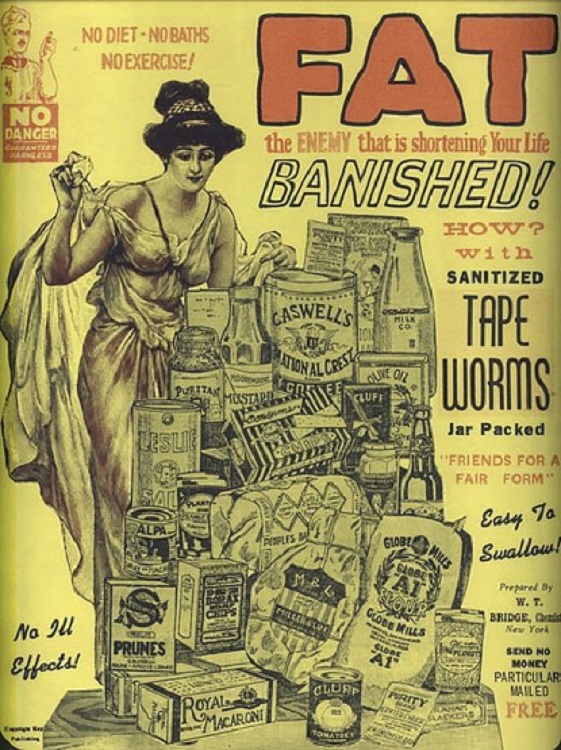
As we can see, unhealthy body modifications have been around since at least the 12th century. Most of these were extremely damaging to the body, simply for the sake of attaining an “ideal female form.” These unhealthy yet socially acceptable actions to achieve a particular body type, without the presence of celebrities or media, brings about the central question of this series: is striving for the ideal body type simply a part of the human condition, rather than brought on by the media of our society today?





















